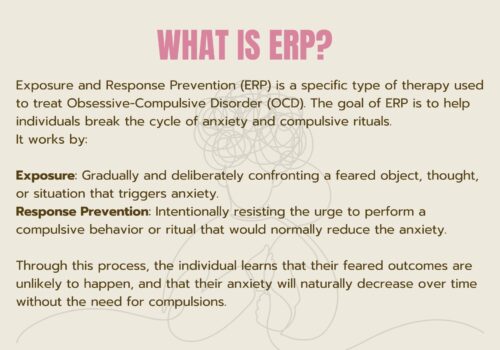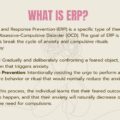- What is Passive Aggressive Behavior?
- Signs of Passive Aggressive Behavior
- Examples of Passive Aggressive Behavior
- Understand Why People Behave Passively and Aggressively
- The Consequences of Passive Aggressive Behavior
- How To Deal With Passive Aggressive Behavior – 5 Valuable Tips
- How to Identify Passive Aggressive Behavior in Yourself
- Frequently Asked Questions
- Conclusion
What is Passive Aggressive Behavior?
Passive aggressive behavior is a way of expressing anger and frustration in a non-confrontational manner. It is often done to manipulate, control, or coerce another person. It is a form of communication that can be difficult to deal with because it is indirect and often difficult to identify. it can be hard to identify.
The most common form of passive aggressive behavior is called passive aggressive silence. This is when someone does not respond to a situation in a direct manner but instead chooses to remain silent. They may also choose to ignore the situation or refuse to communicate.
Other forms of passive aggressive behavior can include refusing to do tasks, procrastinating, being uncooperative, and making sarcastic comments. These are all ways of expressing anger and frustration without directly confronting the other person.
Signs of Passive Aggressive Behavior
There are several signs that someone may be engaging in passive aggressive behavior. These signs can include:
- Refusing to communicate directly
- Making sarcastic comments
- Refusing to do tasks
- Procrastinating
- Being uncooperative
- Ignoring the situation
- Making excuses
- Making assumptions
- Showing contempt or superiority
These are all signs that someone may be engaging in passive aggressive behavior. It is important to be aware of these signs so that you can identify when someone is being passive aggressive and address it accordingly.
Examples of Passive Aggressive Behavior
There are many examples of passive aggressive behavior. Some of the most common examples include:
- Saying yes but meaning no
- Making excuses
- Making assumptions
- Refusing to do tasks
- Ignoring the situation
- Refusing to communicate directly
- Being uncooperative
- Procrastinating
- Making sarcastic comments
- Showing contempt or superiority
Understand Why People Behave Passively and Aggressively
While some people might behave passive-aggressively because they don’t know any better, there are many reasons why someone might be doing this. People who feel unsupported or unappreciated at work or home may respond with passive aggression. They might feel trapped, stressed, or unable to confront those around them about their feelings.
They might also be experiencing feelings of envy or anger toward the people they’re interacting with, or perhaps they have low self-esteem and are struggling with their own self-worth. In some cases, passive aggression might be a learned behavior as a result of a difficult upbringing or toxic relationships with parents, siblings, or peers.
The Consequences of Passive Aggressive Behavior
Passive aggressive behavior can have serious consequences. It can create tension and conflict between people, lead to misunderstandings, and create a hostile environment. It can also lead to feelings of frustration, anger, and resentment.
Passive aggressive behavior can lead to a breakdown in communication between people. It can lead to feelings of distrust and a lack of respect for one another. This can lead to a breakdown in relationships, whether it is in the workplace or in personal relationships.
Passive aggressive behavior can also lead to a lack of productivity. If someone is engaging in passive aggressive behavior, they are not likely to be productive. They may procrastinate, be uncooperative, or refuse to do tasks. This can lead to a decrease in productivity and an overall decrease in morale.
How To Deal With Passive Aggressive Behavior – 5 Valuable Tips

How we respond to passive aggression can significantly impact our relationships with coworkers, friends, family members, and partners — as well as our mental health and stress levels. Here are some of the valuable tips to deal with Passive aggression.
Set Boundaries
When dealing with passive aggressive people, remember to set boundaries and stick to them. If you find yourself in a situation where someone is being passive aggressive, address it directly. Let them know their behavior is unacceptable, and you won’t stand for it. If they push back, be firm and don’t give in.
If a coworker or friend is passive-aggressive toward you, set firm boundaries and let them know that you don’t appreciate their behavior. Set boundaries together if you’re in a romantic relationship with a passive aggressive person. Get them to understand that you won’t accept how they treat you. If they continue to push against the boundaries you set, you may want to consider ending the relationship, as this may be a sign of a bigger problem.
Be Firm And Clear
If someone is passive aggressive toward you, don’t let it slide. Be firm and clear about your expectations, and tell them about their behavior. You may want to consider bringing it up in a private conversation. Be strong in your delivery, and don’t let them push you around. Let them know that their behavior is unacceptable, and if they continue to behave this way, they will have to leave the relationship.
If a coworker or friend is passive aggressive toward you, and you let it slide, they will continue to do so. If they’re a colleague, you can talk to your manager about their behavior. If they’re a friend, you can let them know that their behavior is not acceptable. Be firm that you won’t tolerate it, and don’t give in.
Don’t Take Their Behavior Personally
Taking someone’s passive aggression personally is easy, but you mustn’t do it. Remember, if someone is being passive aggressive toward you, it’s not because of you. It’s because of them. Don’t let their behavior get you down. Instead, use it as a way to recognize your strengths and know that you don’t have to put up with the unprofessional, disrespectful, and unproductive behavior of others.
If someone is passive aggressive toward you, don’t feel the need to get defensive. Remind yourself that it’s not about you, and they are, in fact, unprofessional and unproductive. If you have any authority over the person who is being passive aggressive, don’t let them get away with it. Tell them they are unacceptable, and they will have to leave the team if they continue their behavior.
Establish Check-in Protocols
Suppose you’re dealing with a passive aggressive coworker, friend, or family member. In that case, you will want to put some check-in protocols in place so that you know when and how they are feeling unappreciated, frustrated, or unsupported. While it’s important not to micro-manage anyone’s feelings, it is essential to check in with them regularly to see if there is anything you can do to help. When the check-in protocol is on their terms, the passive-aggressive person can open up about their feelings without feeling that they have to justify or explain themselves.
Confront Problems Head On
If someone is passive aggressive toward you, confront them head-on. Let them know that their behavior is unproductive and unacceptable. If they are a colleague, you may want to ask to meet with their manager and discuss the situation. If they are friends, you can tell them that you won’t put up with their behavior and that you would like to meet with them to discuss the situation.
If they are a family member, you may want to consider getting advice from a therapist on how to deal with the situation. If you are in a romantic relationship with a passive aggressive person, confront them head-on. Let them know that their behavior is unproductive and unacceptable. If they continue their behavior, you may want to consider ending the relationship.
How to Identify Passive Aggressive Behavior in Yourself
It is important to be aware of your own behavior and habits. If you find that you are engaging in passive aggressive behavior, it is important to take steps to address it.
One way to identify passive aggressive behavior in yourself is to take note of the way you communicate with others. Do you often ignore people or refuse to communicate directly? Are you often making sarcastic comments or procrastinating? These are all signs that you may be engaging in passive aggressive behavior.
Another way to identify passive aggressive behavior in yourself is to pay attention to your own feelings. Do you often feel frustrated or angry? Do you often feel resentful or hostile? These are all signs that you may be engaging in passive aggressive behavior.
Frequently Asked Questions
The root cause of passive aggressive behavior is often fear or insecurity. People may be afraid to express their true feelings or desires directly, or may feel powerless or unable to confront the person who is causing the problem. As a result, they may resort to indirect, passive methods of communication.
Additionally, unresolved issues stemming from past experiences, such as childhood trauma or unresolved family dynamics, can cause people to resort to passive aggressive behavior as a form of defense. Finally, social and cultural norms that discourage the expression of negative emotions can also lead to passive aggressive behavior as people try to repress or mask their true emotions.
What kind of personality is passive aggressive?
A passive aggressive personality type is someone who expresses their negative feelings in an indirect, passive way. This type of person may be hard to read, as they often don’t express themselves openly or directly. Instead, they may act in a way that implies they’re upset or angry – such as withholding communication, showing signs of apathy, or responding in a sarcastic way. Passive aggressive behavior is often seen as a way to avoid confrontation, and it can be difficult to confront someone who is behaving in this way. Due to their indirect nature, passive aggressive personalities may be difficult to spot, but there are a few clues that can help. For example, they may often be passive and unhelpful, or may appear to be overly agreeable, even when they don’t really agree. It’s important to be aware of the signs of passive aggressive behavior, so that you can address it before it becomes a problem.
Is passive aggressiveness is a form of gaslighting?
Passive aggressiveness can often be a form of gaslighting. Gaslighting is a type of psychological manipulation in which someone makes another person doubt their own sanity, memory, or perception. While it is often used as an abusive tool of control, it can also be an unconscious form of manipulation. Passive aggressiveness is a form of this manipulation. It involves behaving in a non-confrontational way that is still meant to convey a message. It can be anything from sulking and “forgetfulness” to the silent treatment and sarcasm. When someone deliberately uses these methods in order to control or undermine someone else’s opinions or behavior, it is a form of gaslighting. It is important to be aware of this behavior and how it can be used to manipulate others. If you recognize it in yourself or someone you know, it is important to address it and find ways to communicate in a healthier way.
Do passive aggressive people have low self esteem?
It is commonly accepted that passive aggressive behavior is often indicative of low self-esteem. People with low self-esteem may be unwilling or unable to communicate openly and directly. As a result, they may resort to passive aggressive tactics, such as sarcasm and manipulative behavior, in order to express their feelings or get their needs met. Passive aggressive behavior may also be a sign of an underlying psychological issue, such as anxiety or depression. While it can be difficult to deal with passive aggressive people, it’s important to remember that they may be struggling with low self-esteem and should therefore be treated with patience and understanding.
Conclusion
Passive aggressive behavior is a type of communication that is indirect, non-assertive, and aggressive. It is a way of expressing anger and frustration in a non-confrontational manner. It is important to be aware of signs of passive aggressive behavior so that you can identify it in yourself or in others and take steps to address it.
If you find that you are engaging in passive aggressive behavior, it is important to take steps to address it. It is important to be aware of your own behavior and habits and to pay attention to your own feelings. It is also important to communicate directly and honestly with others and to be open to feedback. Taking these steps can help you to address passive aggressive behavior in yourself and in others.















